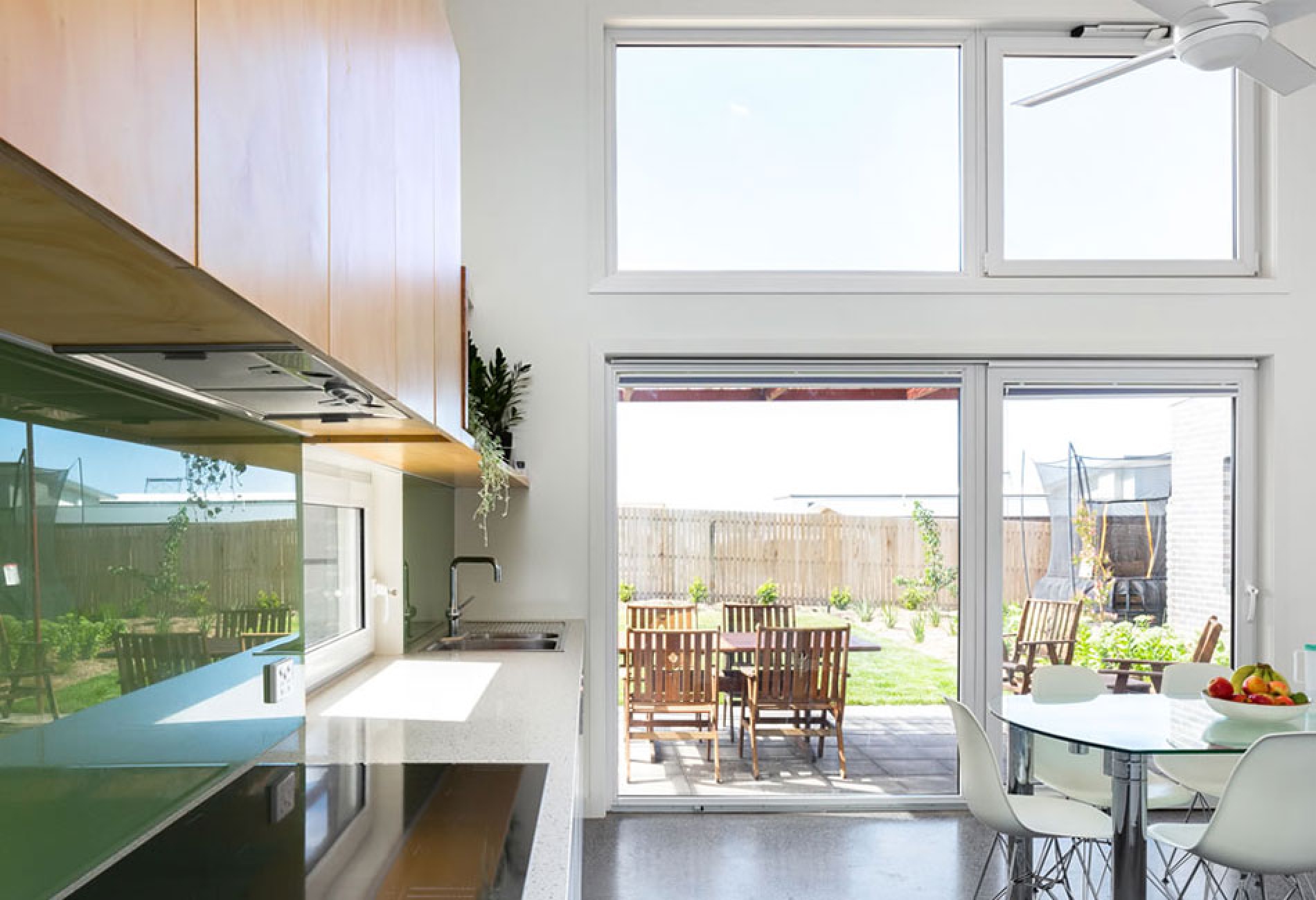In Australia, we love our windows for bringing natural light into our homes – the bigger and more of them, the better. But when it comes to insulation – keeping heat either in or out, many of these windows are not as energy efficient as they could be. Here we explain how higher-performance uPVC windows can help to deliver that all-important cost-effective solution.
Improving the energy efficiency of new construction and existing residential buildings in Australia has been gathering momentum in recent years. Cutting down the carbon footprint of our built environment and reducing carbon emissions is seen as a vital contribution towards fighting climate change.
Adding insulation to walls has been seen as a relatively cost-effective way of improving the star energy efficiency rating of new builds and renovations. However, by creating ‘holes’ and thermal bridges in the building fabric, it is windows that are a major source of compromise in the thermal performance in the building. A glazed wall makes your house more difficult to maintain a comfortable temperature all year round. It is like an ‘open wound’ – either leaking or absorbing too much heat, depending on the season.
So, how do we try to heal this ‘wound in the wall’? To understand how poor-performing windows leave a gaping ‘hole’ in an insulated wall, we have to consider how insulation and conduction of thermal energy is measured to compare the two structures – walls and windows.
Wall insulation is usually given in R-Values – a measure of how much an insulation structure will resist the flow of thermal energy over a two-dimensional surface. Windows are rated in U-values (the inverse of R-value) – how much an insulation product will conduct, or lose, heat. So, if we want to compare the window to the insulated wall, we can convert the U value to the R Value.
People are used to hearing about wall insulation R values but may be less familiar with U values for windows. A large, glazed area in an Australian home typically has a U value of 6, equivalent to an R value of 0.15, whereas wall insulation is expected to have an R value of 1.0 to 2.5 depending on climate zone.
For the Victorian climate, the government authority Sustainability Victoria’s recommendation for wall insulation R value is R2.5, with a minimum requirement of R1.5. So, that glazed wall or large window would really struggle to cope with keeping in, or rejecting, heat.
A glazed area will leak heat in winter and allows heat into the interior in summer leading to uncomfortable interior temperatures. What we need is for the glazing to be better insulated, like the wall. That means a lower U value for the windows and glazed doors with a more air tight seal.
While they enhance natural light levels, windows are much less efficient than insulated walls at keeping temperatures stable and sustainable. Nearly 40% of all energy loss from buildings is through windows and doors and up to 87% of building heat can be gained through windows.
Various measures can improve a window’s efficiency. Consider double-glazed panes, reflective low-emissivity coatings, insulating gas (argon) between the glass panes, and tightly sealed uPVC frames that reduce air infiltration between the sash and house frame. Unlike aluminium, uPVC does not conduct heat. In fact, uPVC is 1,000 times less conductive than aluminium.
The lower the U value of the window (and therefore the higher its R value), the more insulation it will provide – keeping you warmer in winter and cooler at the height of summer. Most double-glazed uPVC windows in Australia have U values below 2.2, providing effective and thermally efficient insulation against extremes of both heat and cold, resulting in more stable, comfortable interior temperatures.
According to the CSIRO’s Housing Data Portal, although a growing number of new builds are installing higher performing windows, two thirds of new builds and apartments in 2019 still had windows installed with U values higher than 4. This is a concern as it is locking in poor thermal comfort and energy inefficiency for a long time into the future.
It is, however, welcome news to see the specific reference to uPVC windows for higher performance in some of the free architect-designed plans and base specifications for homes to achieve a minimum 7 Star NatHERS rating in a range of climate zones. The plans have been produced by the Australian federal government and can be accessed through the Department of Industry and Science’s YourHome.gov.au website.
For example, using double glazed uPVC windows in the four-bedroomed ‘Telopea’ home, designed for the Melbourne climate, would achieve a top 7.1- or 7.2-Star rating in terms of energy efficiency. Energy efficient windows make your home more comfortable, dramatically reduce your energy costs and help to create a brighter, cleaner and healthier environment.
Given the high profile of climate change issues and the urgency of addressing climate change-inducing emissions, the thermal-efficiency benefits of higher performing uPVC windows have a serious role to play in improving the residential energy efficiency of our buildings for decades to come. And to help mend that ‘wound in the wall’.







